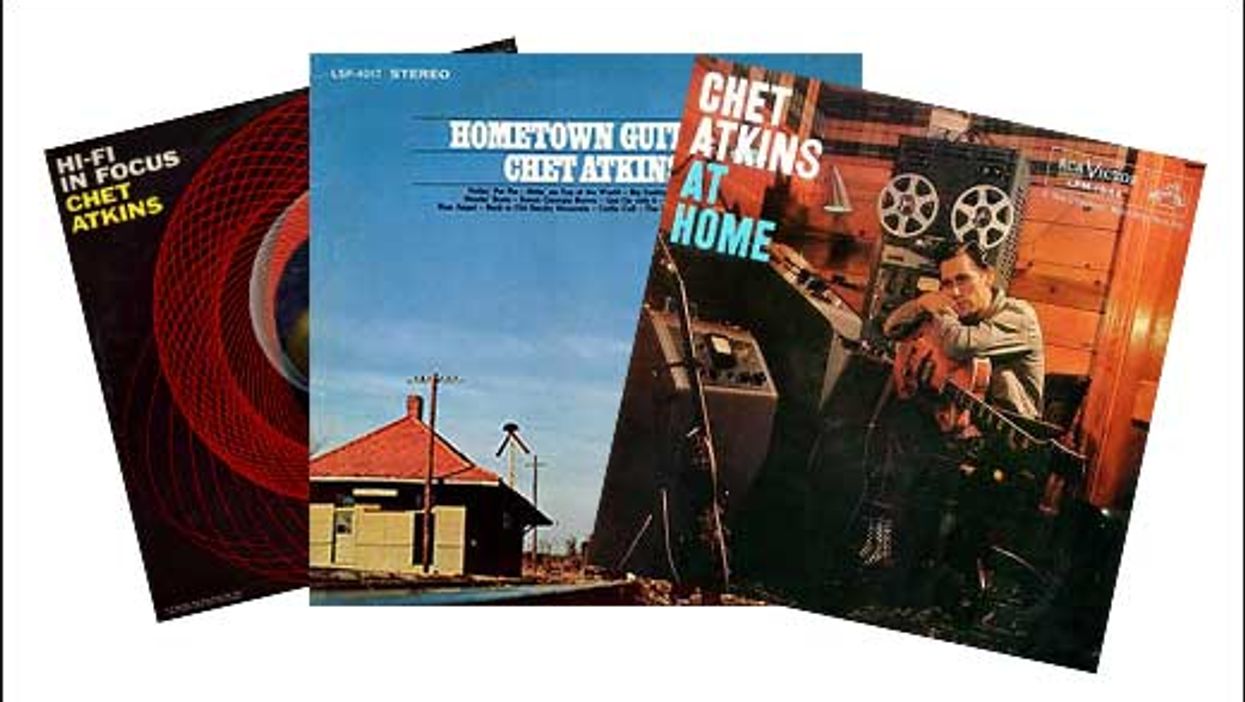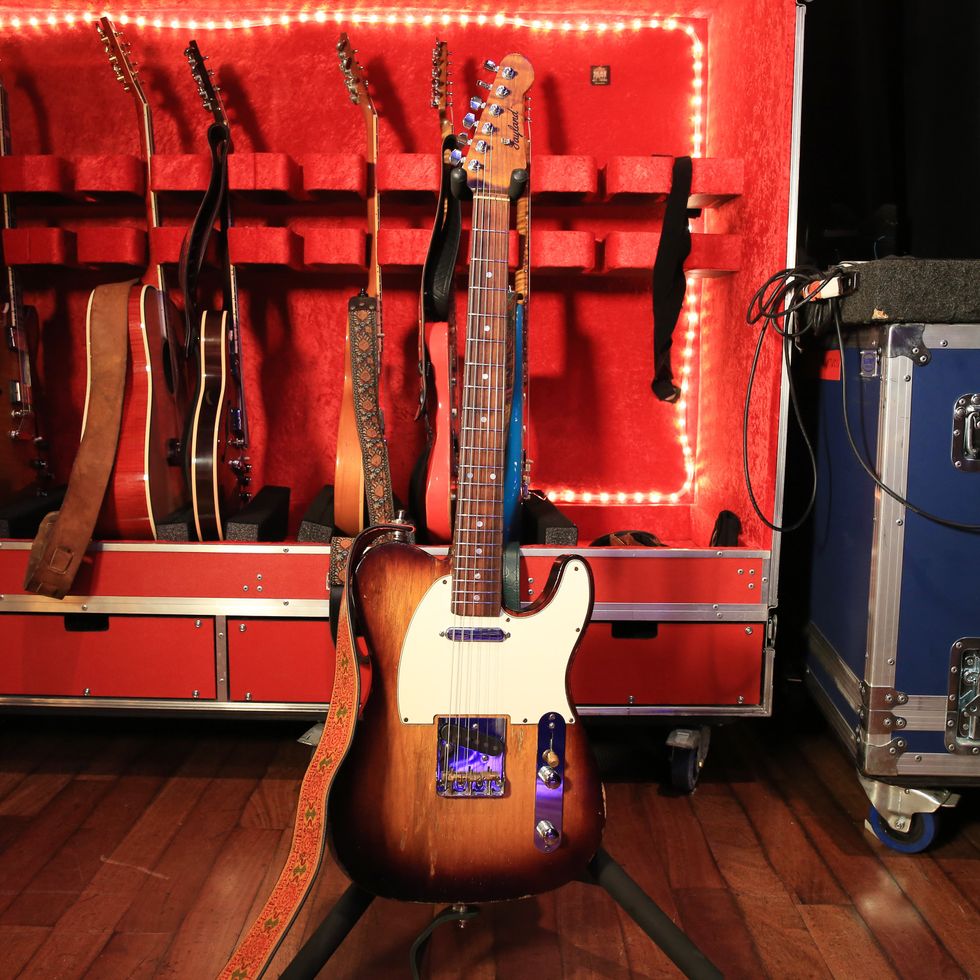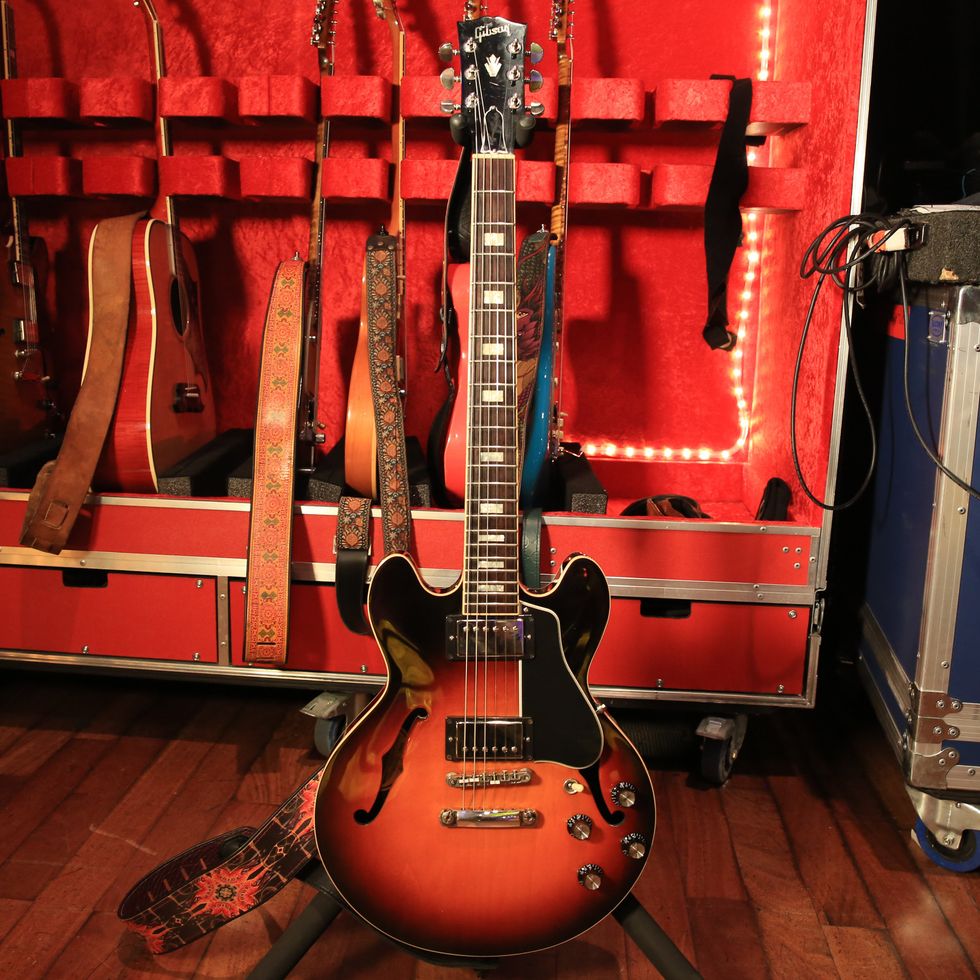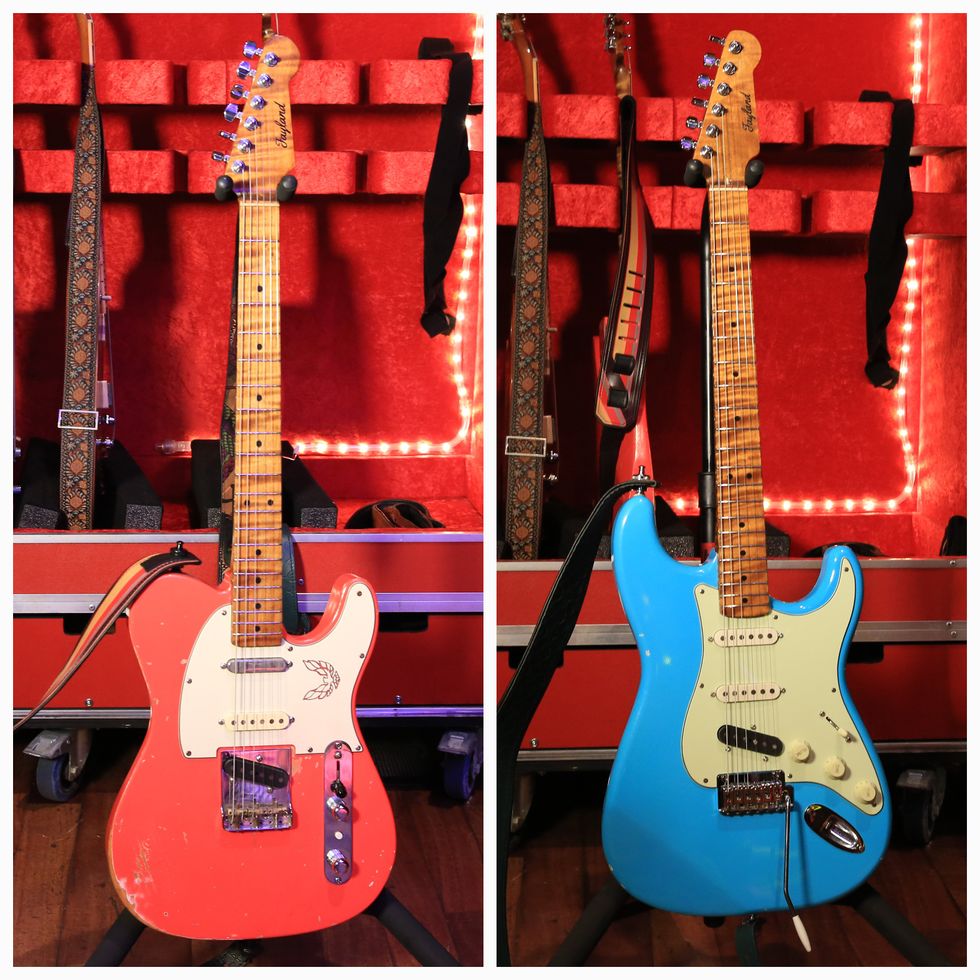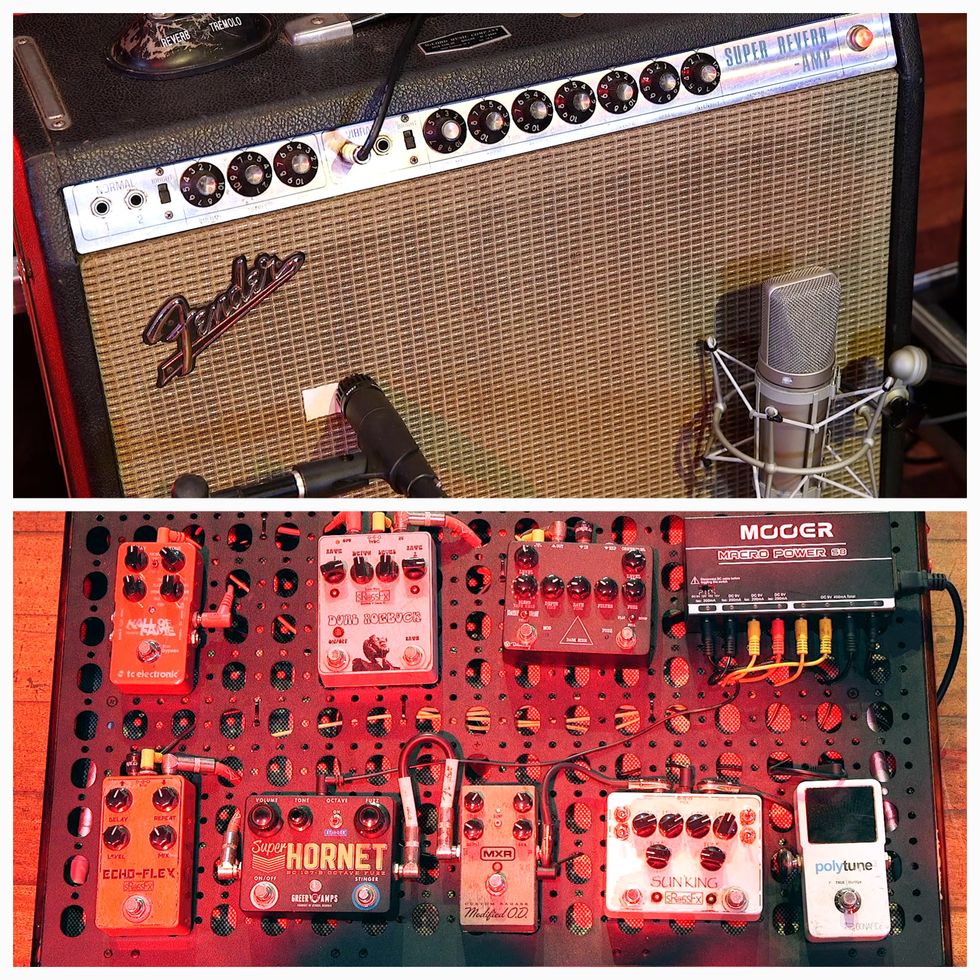How many times are you paralyzed by the sheer number of options you can play over a dominant chord? It’s probably one of the only chords where nearly anything works if you land correctly. One of the most common sounds to use is the Mixolydian scale, which is simply a major scale with a lowered 7. But let’s add on to this sound by expanding our musical Mixolydian palette with a few blue notes and some chromatic embellishments.
The first four examples will be played over a “train” beat. Think more old-school and traditional country. We will look at a few modern applications later on. In Ex. 1 we are thinking C Mixolydian (C–D–E–F–G–A–Bb) over a C major chord. It’s very common to treat major chords as dominants. Other than the hammer-on to the 3 on beat 3 the entire lick falls nicely within the scale.
Ex. 2 is a nice way to incorporate open-string ideas over a major I chord (in this case, C). The back half of the lick has a nice chromatic passing tone that leads nicely into the next chord (F). Make sure to let each note ring out as long as possible.
Connecting chord tones is a crucial element of country guitar. In Ex. 3 I start with a double-stop that directly outlines the essential notes of an F7 chord (Eb and A) before I slip into another double-strop phrase that hints around that same sound. In measure 2 I approach the chord tones of a G major triad (G–B–D) chromatically before winding things up with a trademark country bend.
Ex. 4 is an alternate way of approaching the same two chords (F and G). This would be more how a pedal-steel player might phrase the line. The string of sixths gives the pre-bends a connecting theme. Make sure to hold the last bend, hit the G on the 1st string twice, then release. This creates cool tension that resolves nicely back into the C chord.
You now have several ideas that work well over a 1–4–5 progression on a train beat that’s common to more traditional country. Let’s move to a different groove and vibe that might be considered more modern.
Ex. 5 is played over a E7 chord. This one gets to the heart of using chromatic connecting notes or passing tones. You can really hear the tension the extra possibilities add to this slippery lick.
This lick (Ex. 6) reminds me of how Larry Carlton might approach playing over a E7 chord. Once again, using notes not found in the Mixolydian scale offers a different texture to the musical line, especially the slides in the first measure and the chromatic approaches to the root and 3 in the second measure.
Same groove, different chords. In this case (Ex. 7), one measure of G and one of A. I approach the 3 of the G chord by a half-step right at the top and then repeat it an octave up in the next beat before immediate descending back down to the open 3rd string. The double-stops in the second measure offer a hint of tension before resolving on beat 3.
Ex. 8 is a “no frills” approach and sticks entirely within the A Mixolydian scale (A–B–C#–D–E–F#–G). The entire second measure reminds me of the main lick to Eagles’ “Life in the Fast Lane.”
So, there you have it. More note options will lead to more possibilities to choose from. Some examples just add one extra note, others much more than that. The most important thing is finding what works for you. Until next time!





